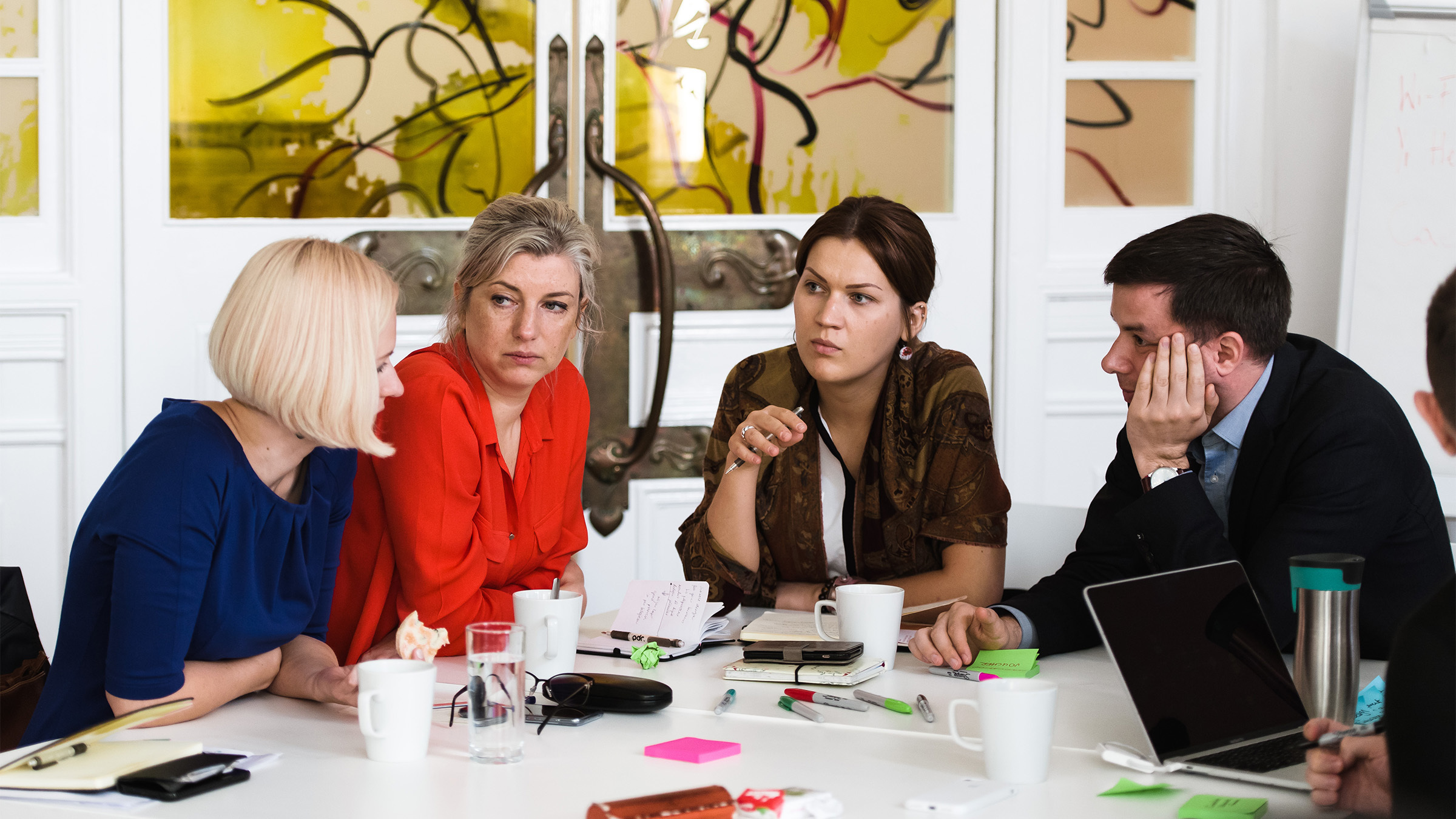How to successfully bring design thinking into an organisation
Design thinking is an umbrella term for projects that promote design principles, that is people-centred, collaborative and uses an action-oriented approach. At its heart, bringing design thinking into an organisation is about building the capacity for design - and creating a culture where the tools for design and creativity can be used by all team members.
But integrating it properly and successfully within an organisation takes time and development. To find out more, we chat with Piotr, Project Manager and Researcher, to find out how organisations can adopt new and innovative methods for ‘design thinking’.
“Ultimately, what we call ‘design thinking’ promises a different way of posing and solving problems that start with users and their experiences, and proceeds through iterative prototyping and further design stages,” Piotr explains.
But it’s important to approach design methodology and processes with realistic expectations; it’s not a “quick and magical fix”, Piotr explains. “If we position design thinking well and explain the process, we can really bring tangible results and benefits to organisations.”
If we position design thinking well and explain the process, we can really bring tangible results and benefits to organisations.
Piotr Swiatek | Project Manager | PDR
So, what are the benefits? By putting design thinking into an organisation, it means teams can learn the value of what design can bring. They’ll understand where they can apply the creative tools and approaches of design themselves - and, importantly, they’ll also learn when to bring in design professionals to help them solve any challenges.
“To me, design thinking is a very useful approach because it puts the tools for creativity in the hands of people who wouldn’t normally identify themselves as creative. It’s been adopted in a wide range of contexts; business, public service, social innovation. All are situations where non-designers can employ design approaches and methods.”
Importantly, employing design thinking helps to build a culture of design within an organisation and helps to leverage the value of design approach where it’s applied - and can help to cultivate collaborative, multidisciplinary approaches across several departments.

So that’s the why - what about the how? How do we actually embed design thinking into a company or team?
“A great way to build it in is through training,” Piotr begins. “This helps to build awareness among staff on why this is so critical. Using experienced facilitators means you can effectively pass knowledge and skills to your teams. The training should be interactive and collaborative, to experience the value of design and its approach first-hand, and it needs to avoid jargon, to best communicate the benefits of design.”
PDR offers a wide range of training sessions - from short tasters to more in-depth, immersive ‘train the trainer’ sessions that help to create ambassadors within an organisation who can then lead workshops and build capacity further.
“It’s also important that the training is relatable to the organisation. We usually focus our training on real projects in the organisation, so we explore what they are working on and the challenges they face; we can then apply this process and undertake training on a live challenge,” Piotr explains.
A great way to build it in is through training, this helps to build awareness among staff on why this is so critical.
Piotr Swiatek | Project Manager | PDR
Another route to build design capacity is through knowledge exchange or training projects.
“One example of building design capacity with training was our project with Essex County Council; it was one of our more immersive capacity-building projects that ran for a longer period. We took their civil servants through a 3-month process, developing all the tools and materials especially for them, and afterwards, we were thrilled to see them at every ‘service design in government’ conference discussing how they developed their design capacity and tools.
“They also set up their own Service Transformation blog, similar to the UK Government’s Digital Service design blogs. Theirs is a case study that really makes me proud to see how design thinking has grown within their organisation and helped them to develop innovative approaches to design.”
Next steps
If you’re part of an organisation looking to adopt design thinking, please get in touch.

